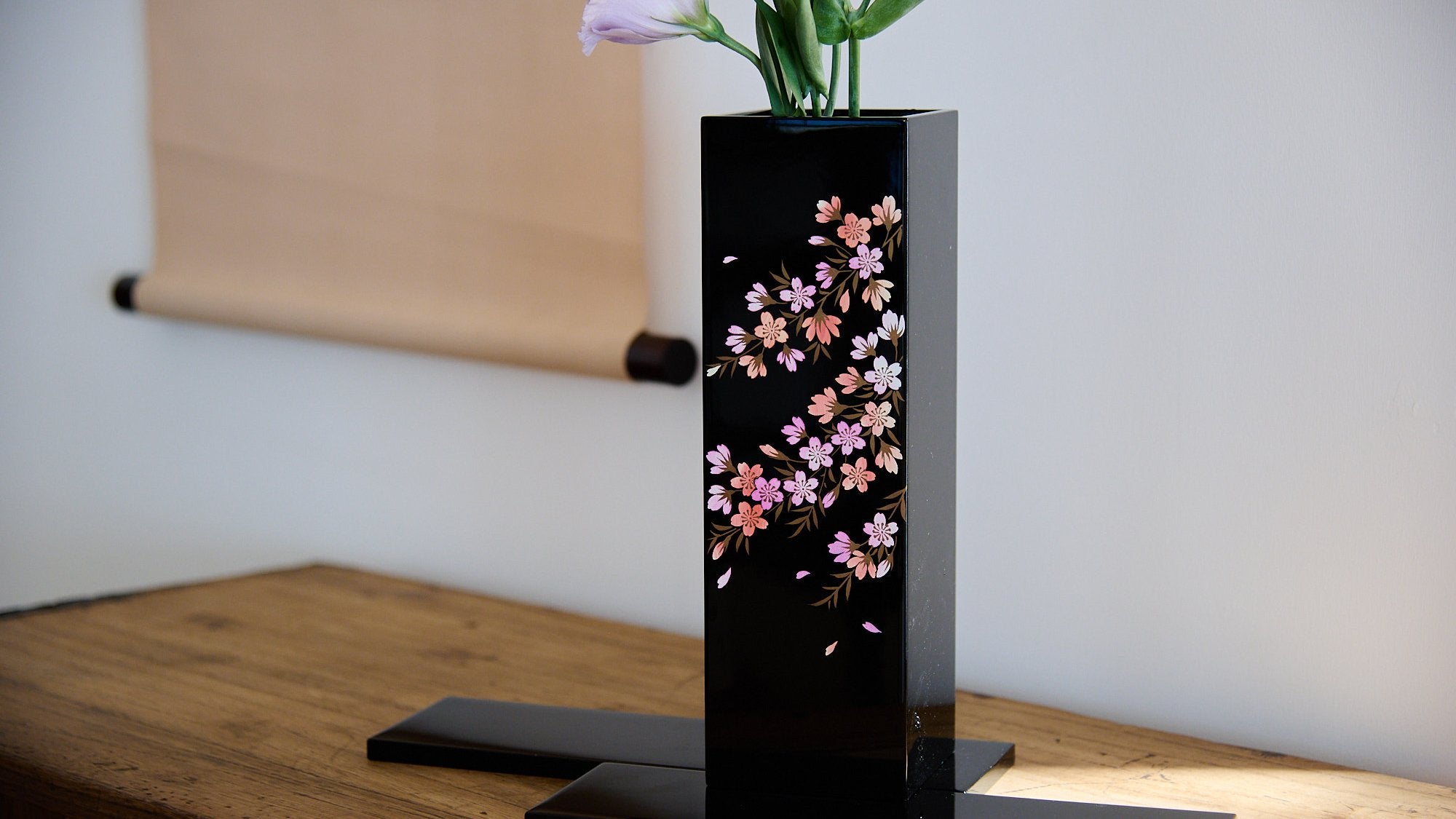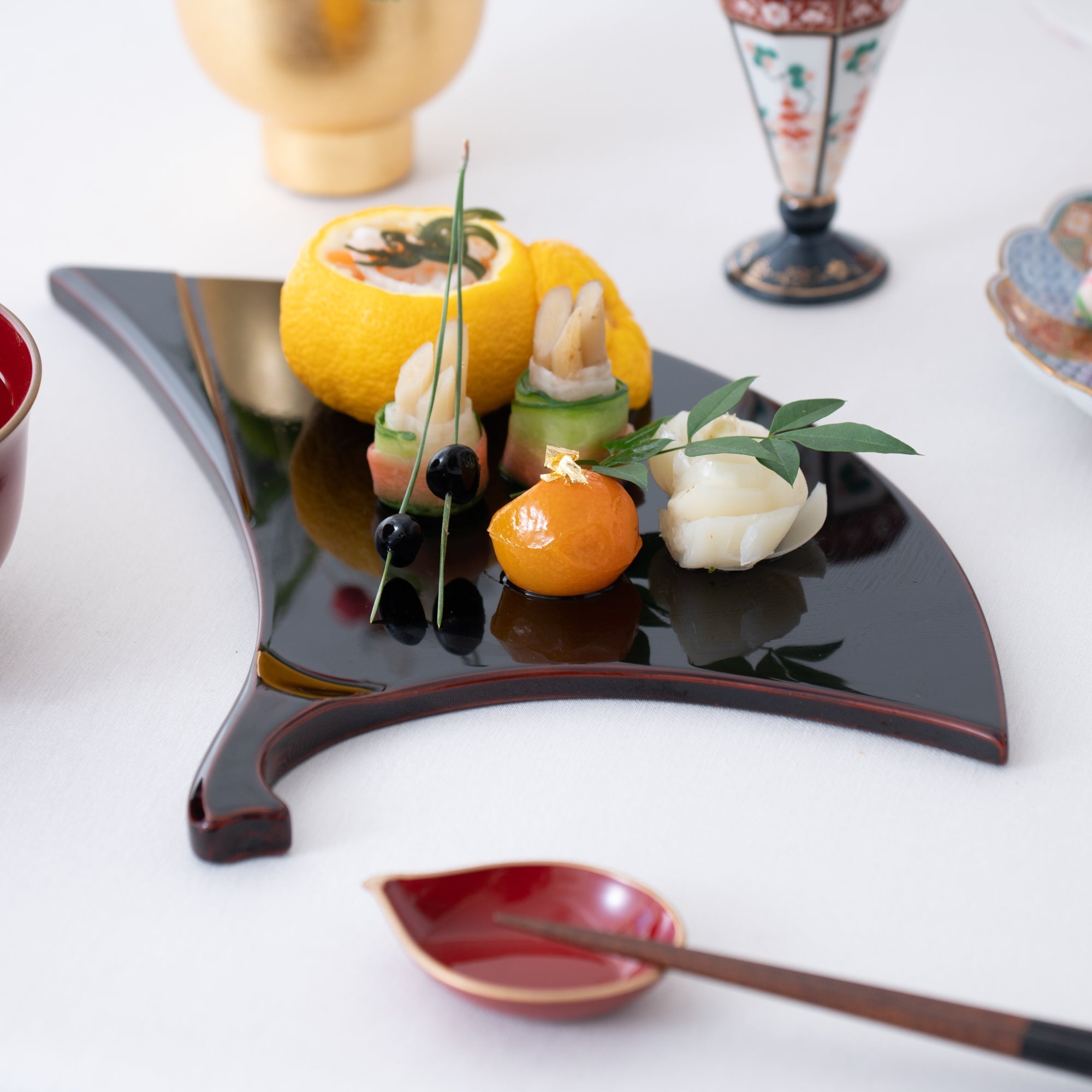
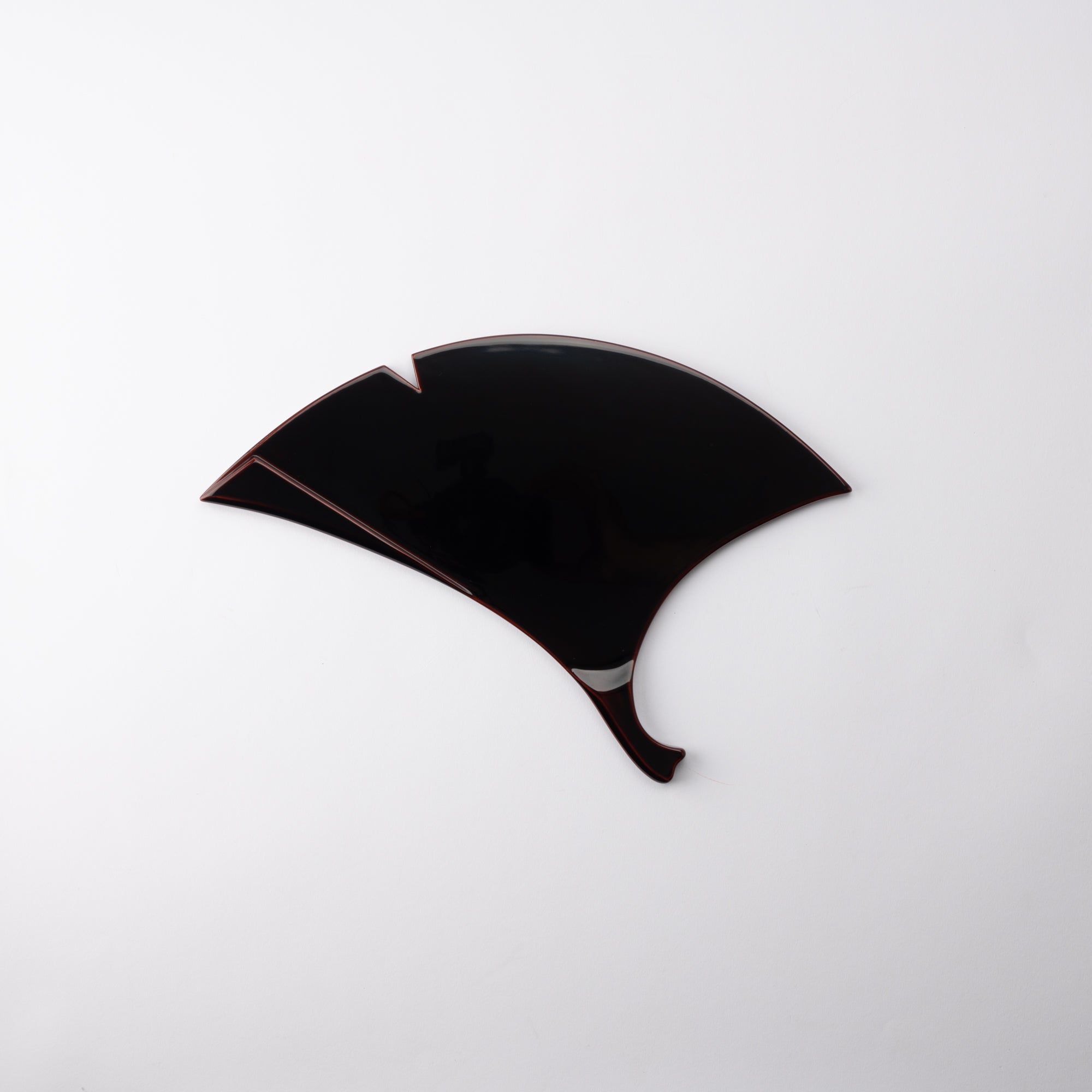
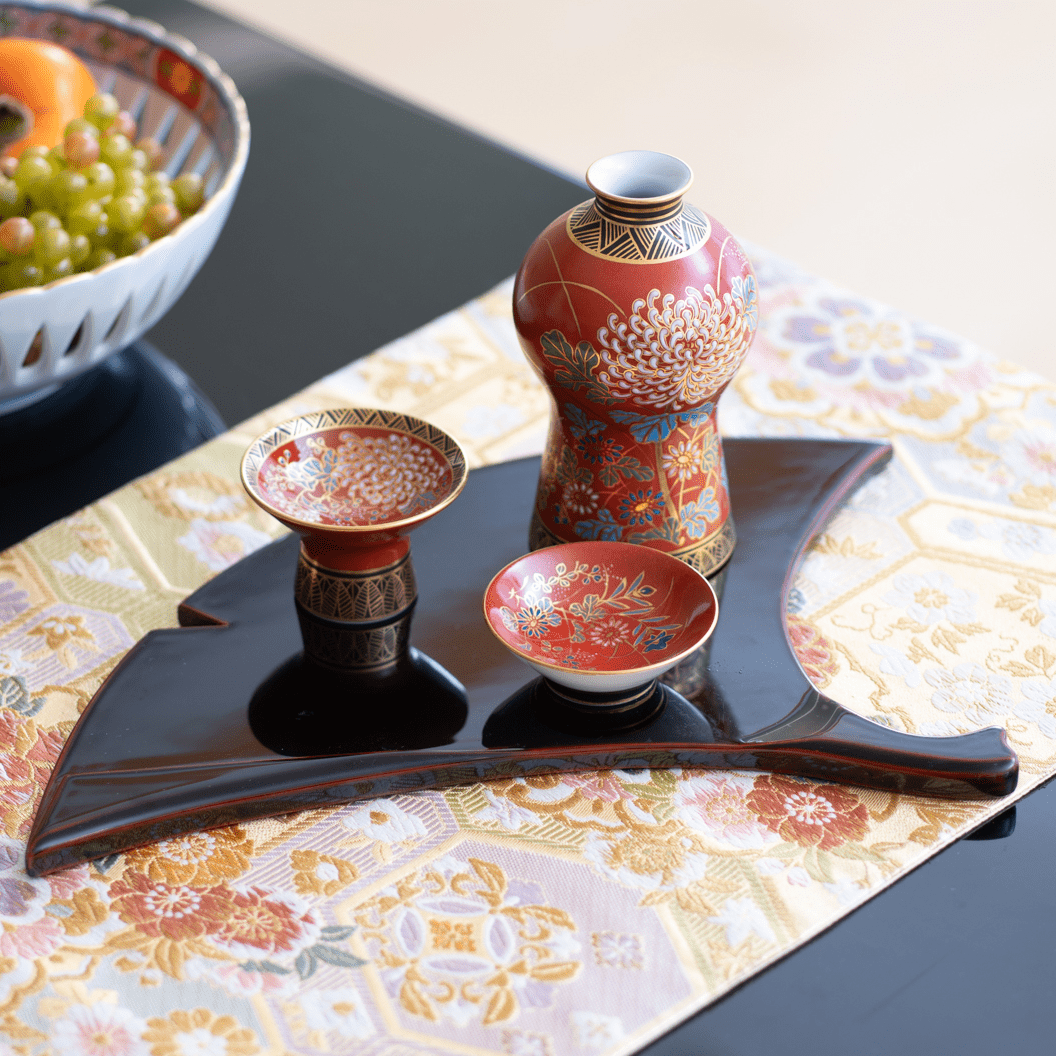
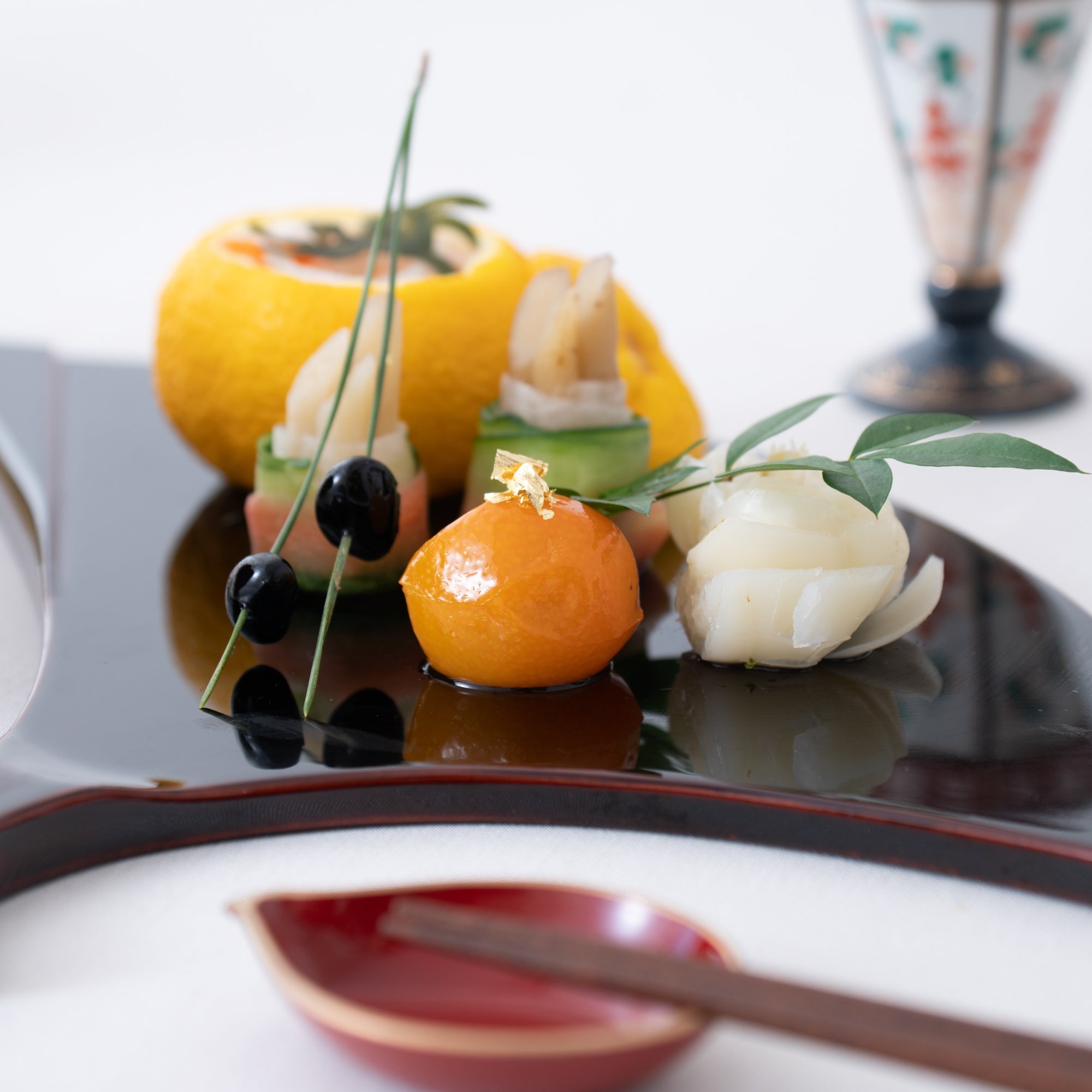
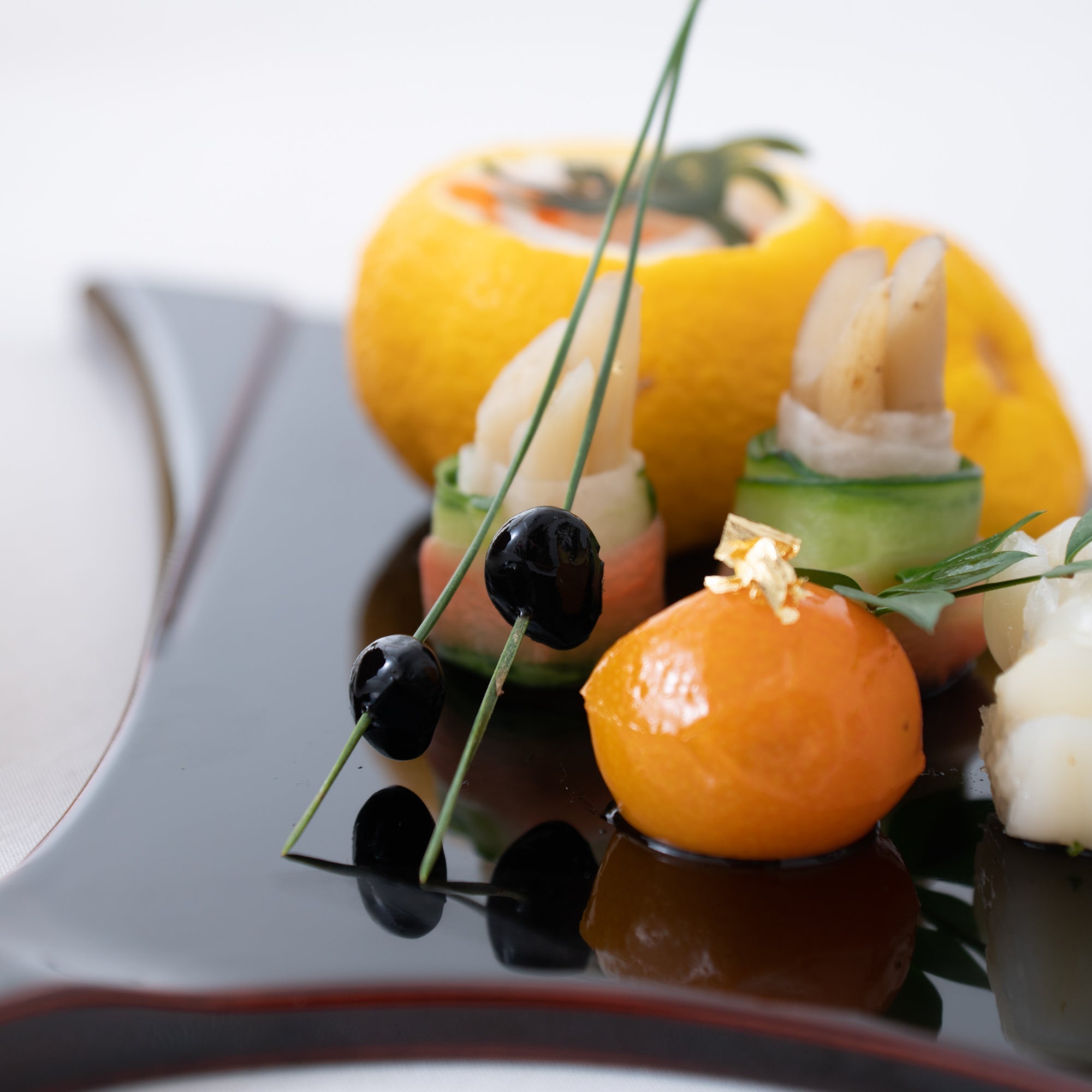
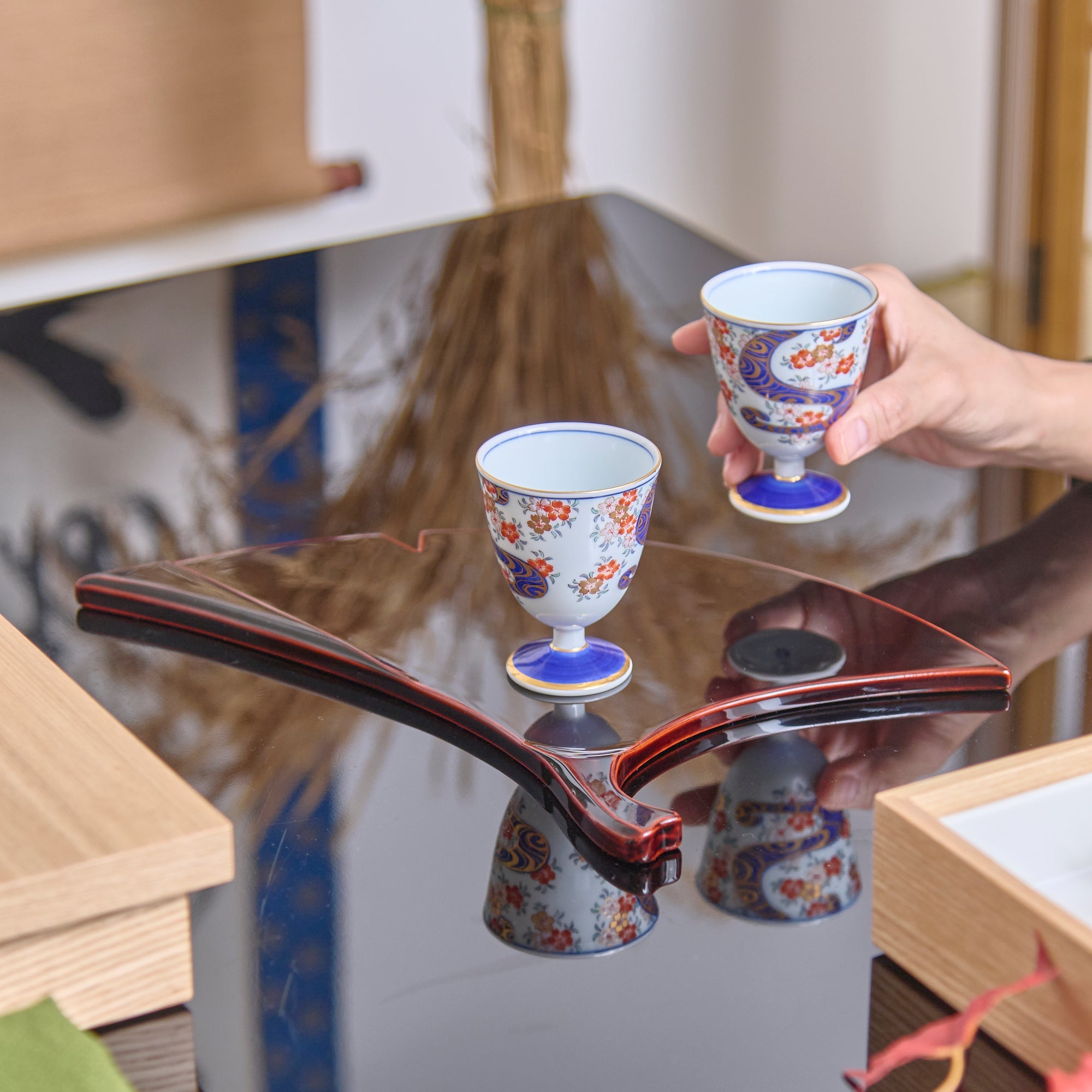
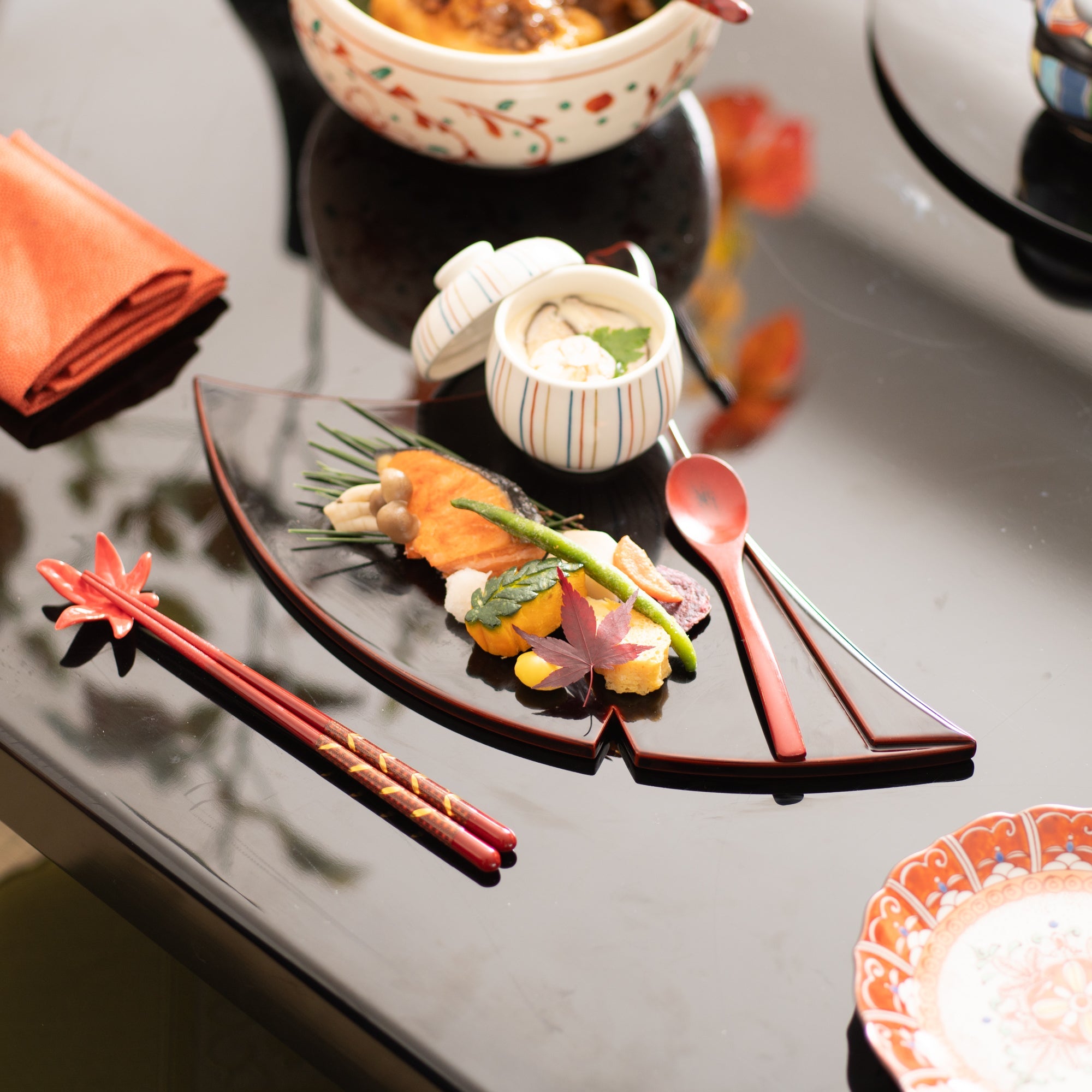
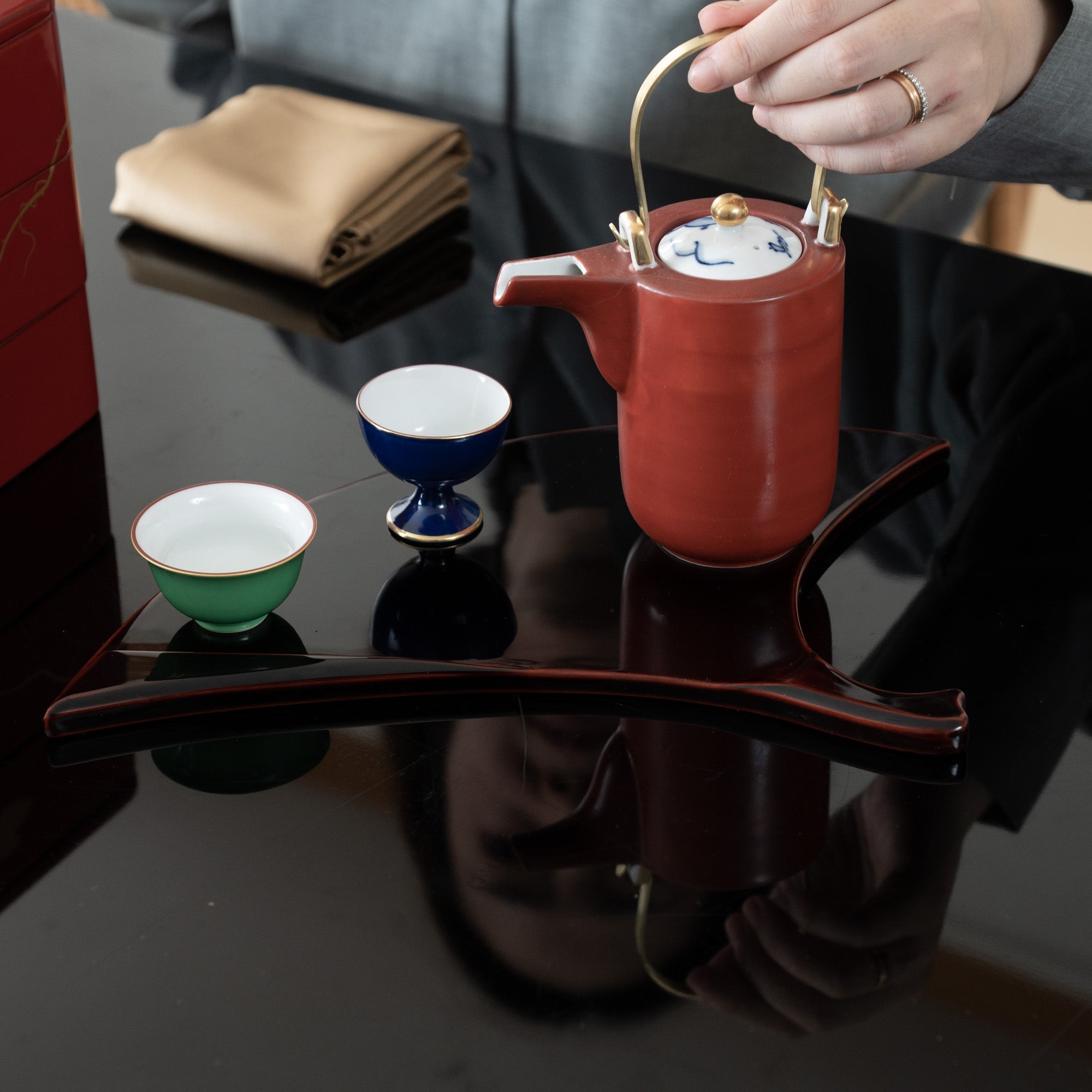
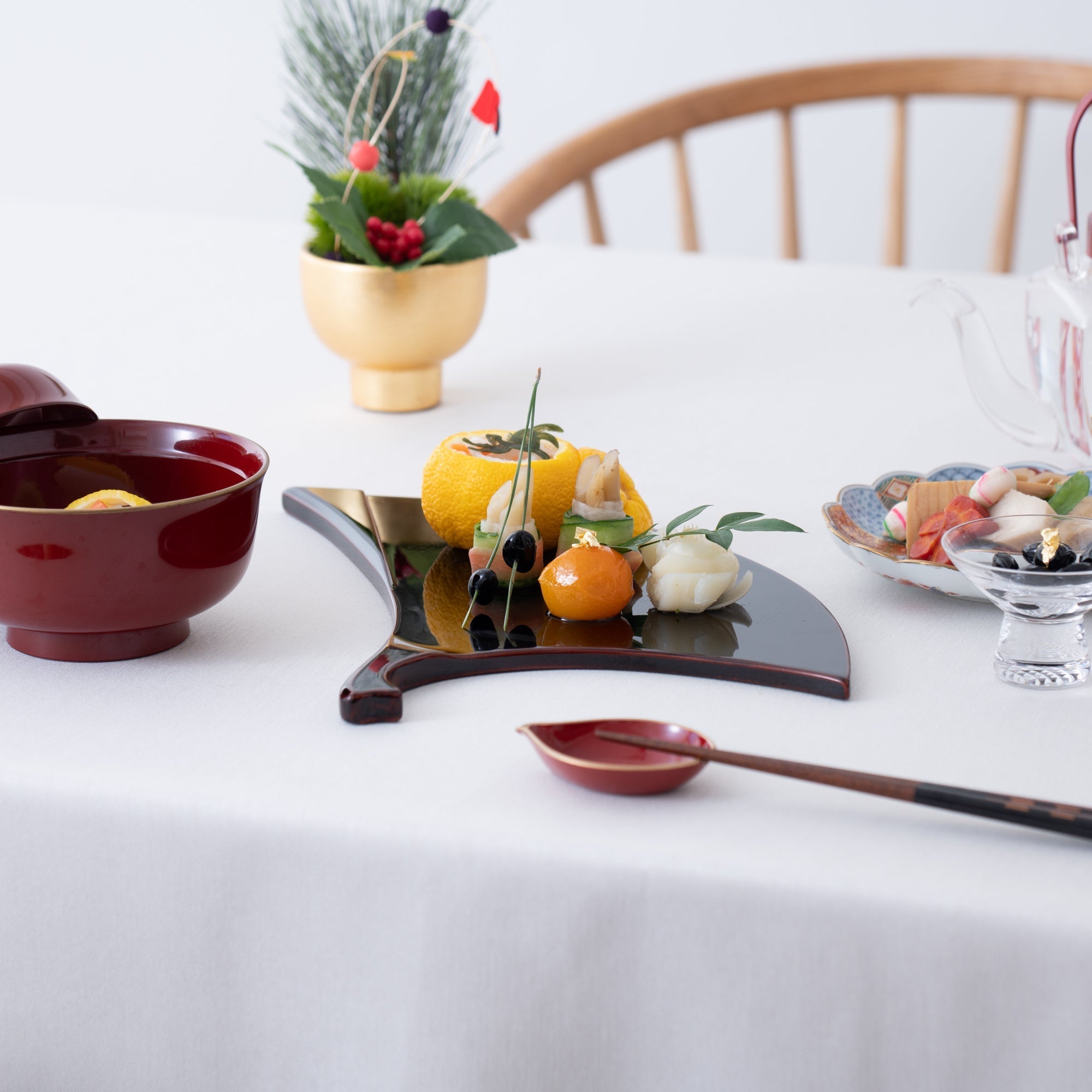
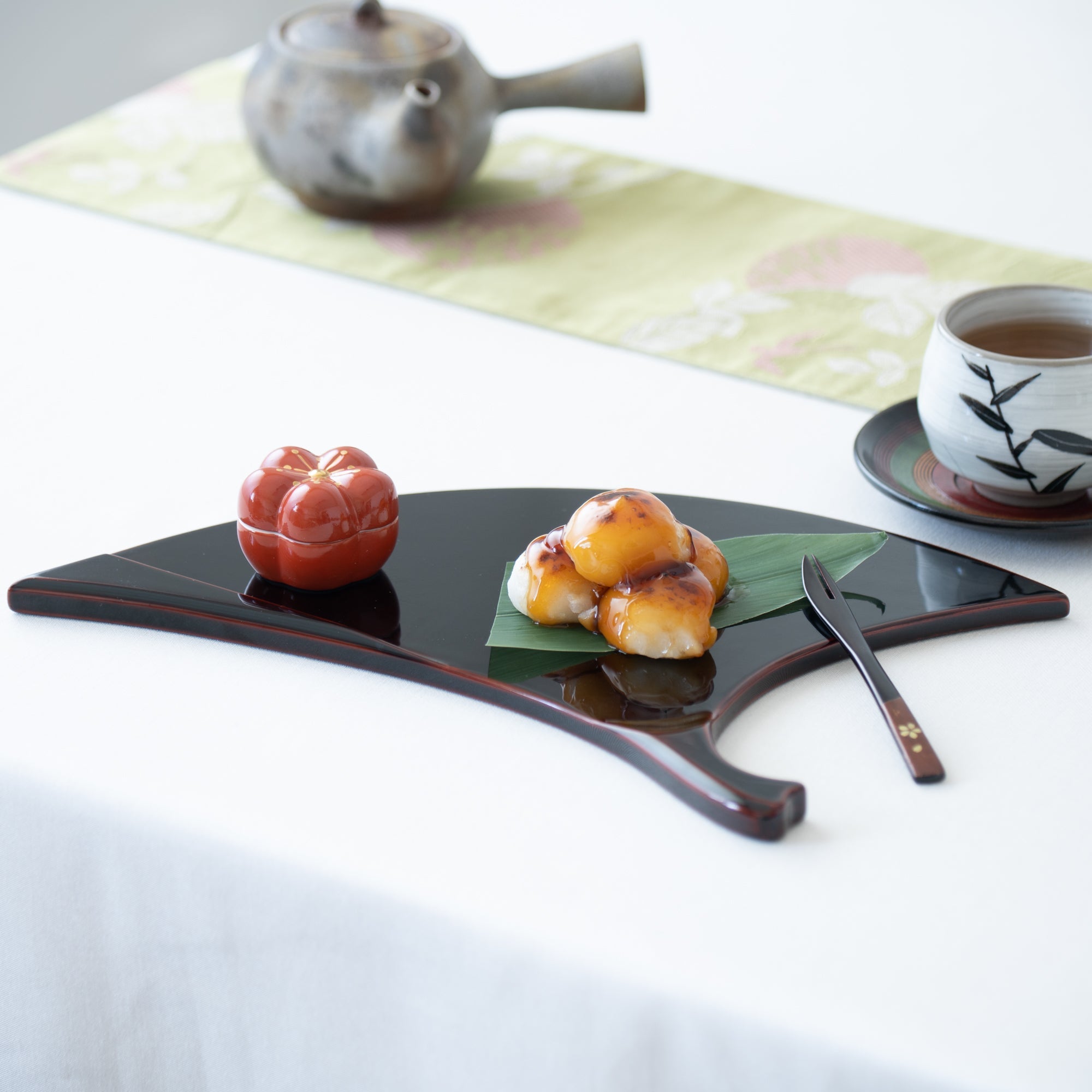
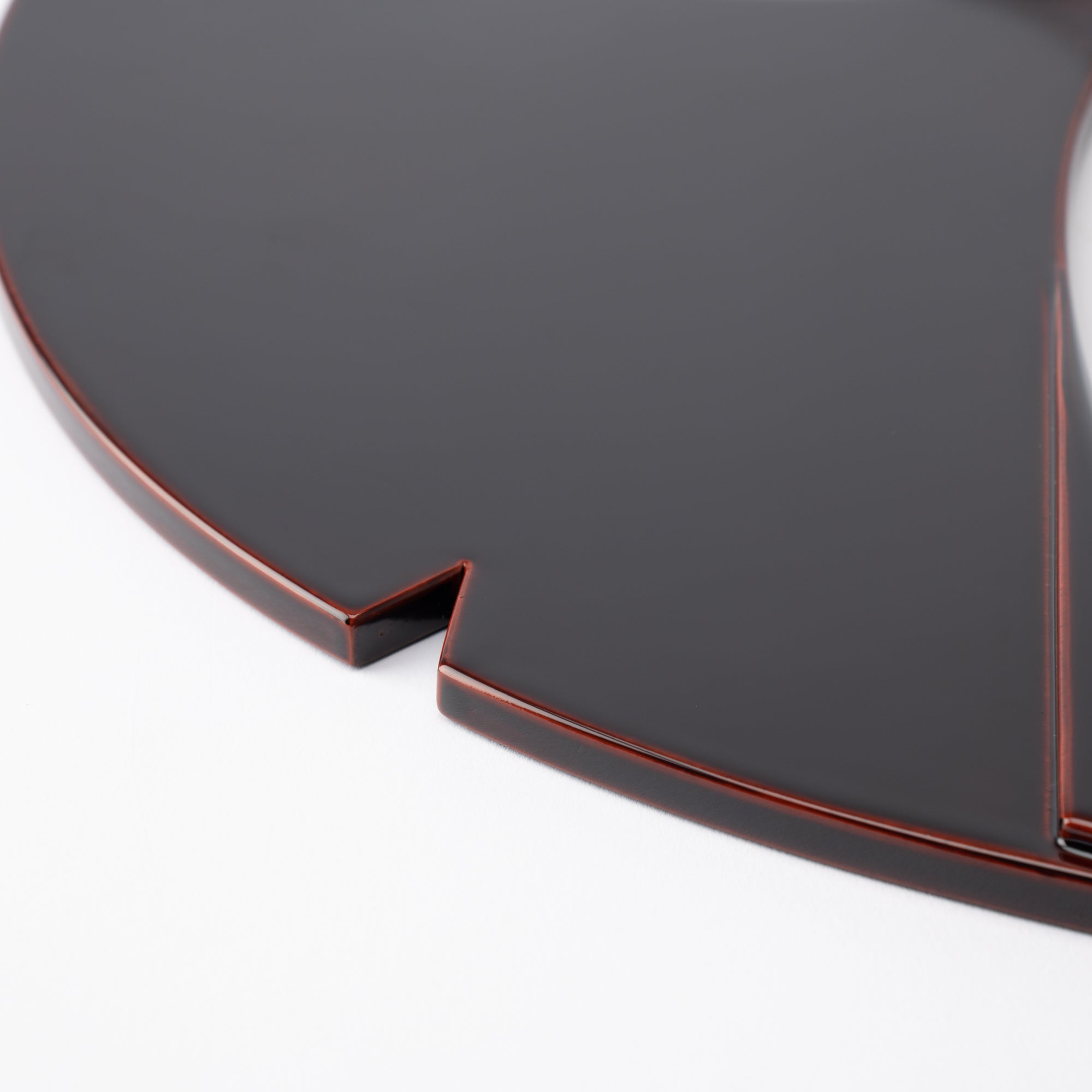
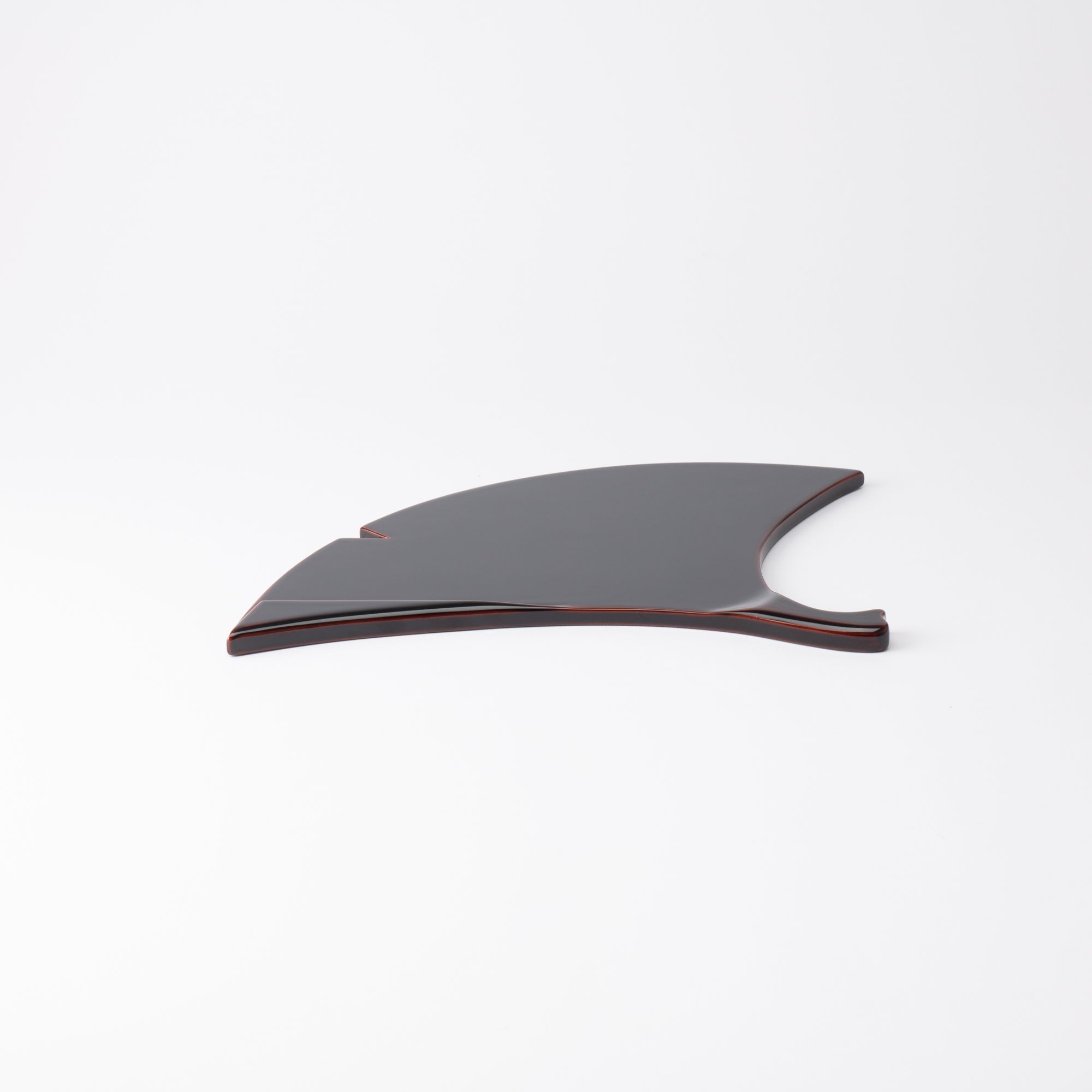
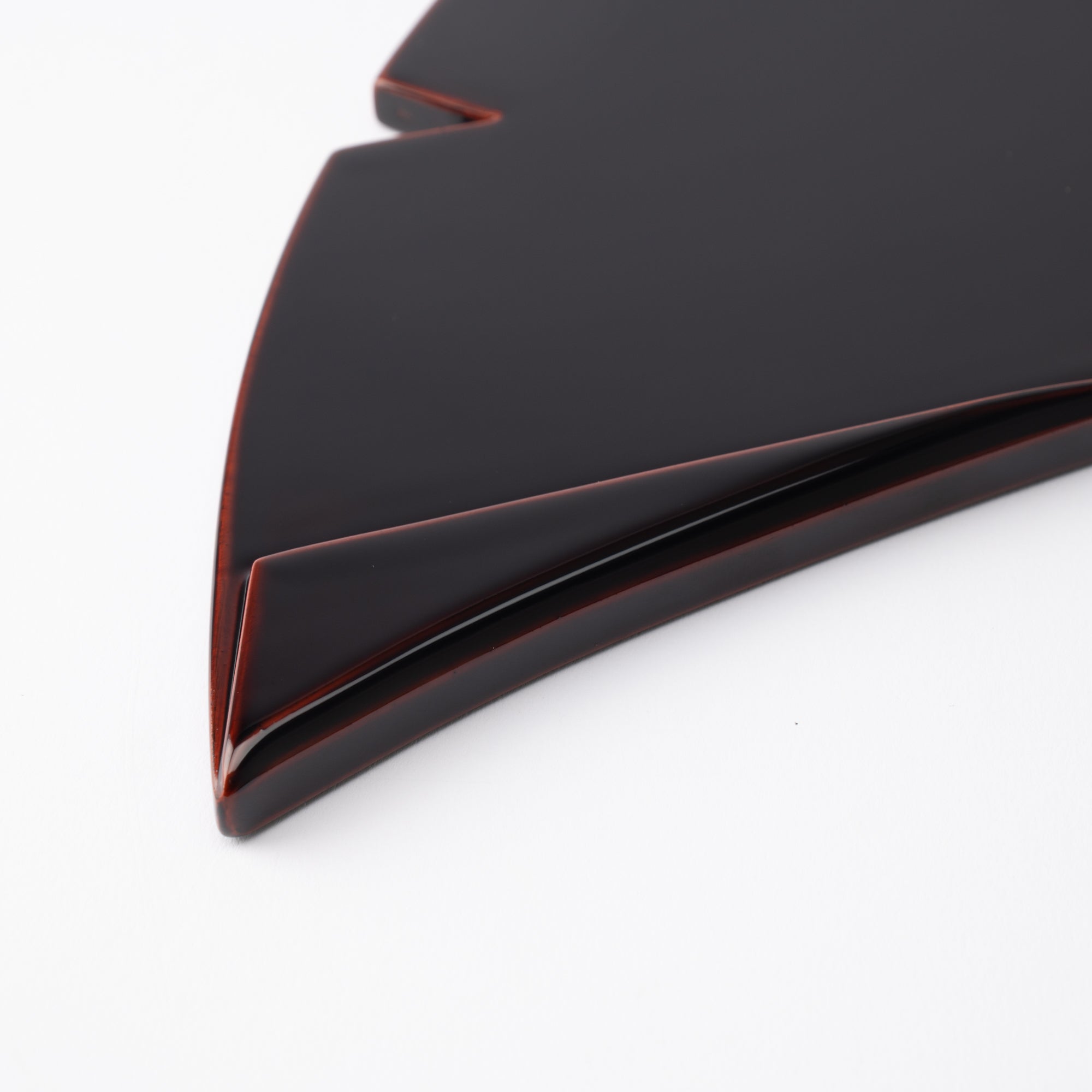
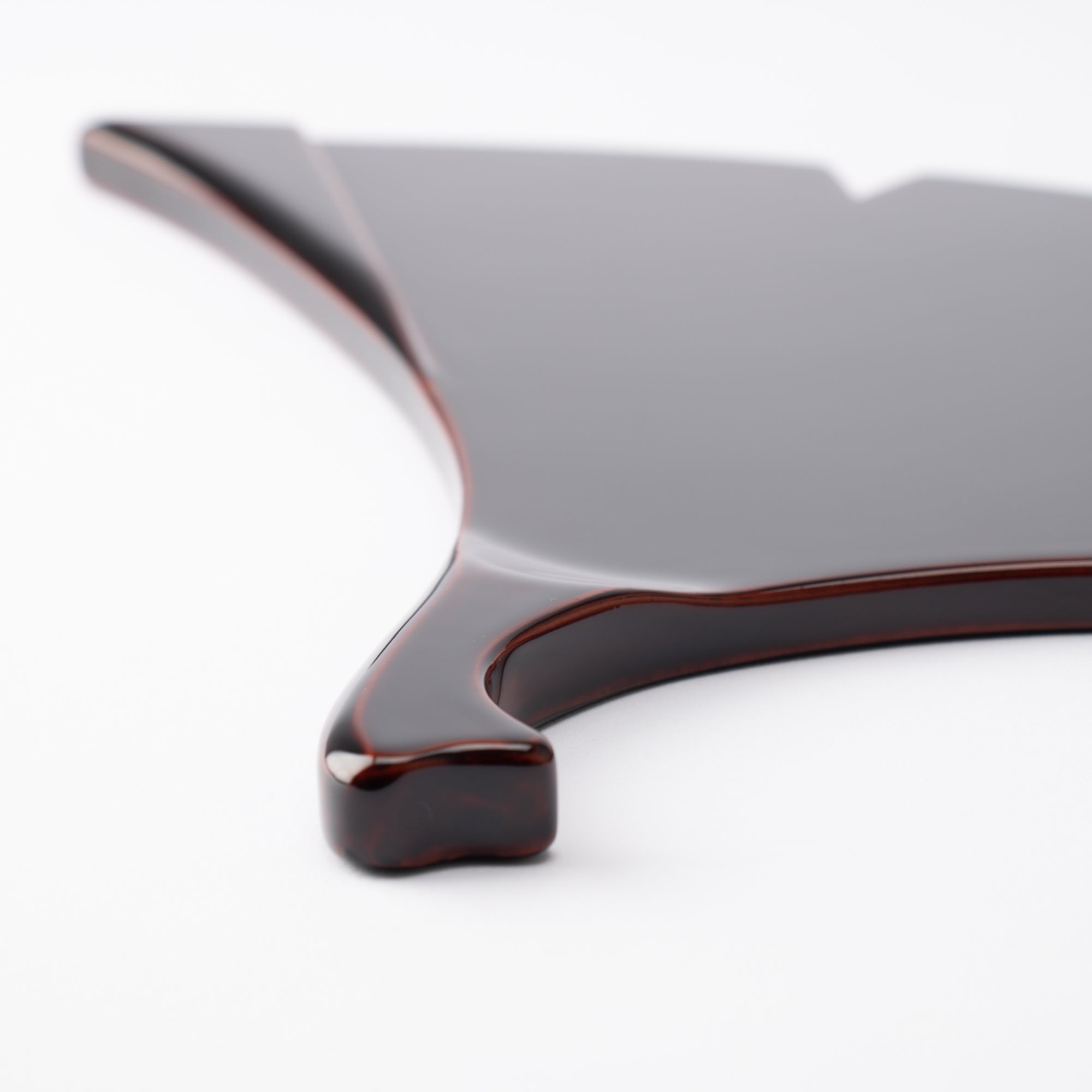
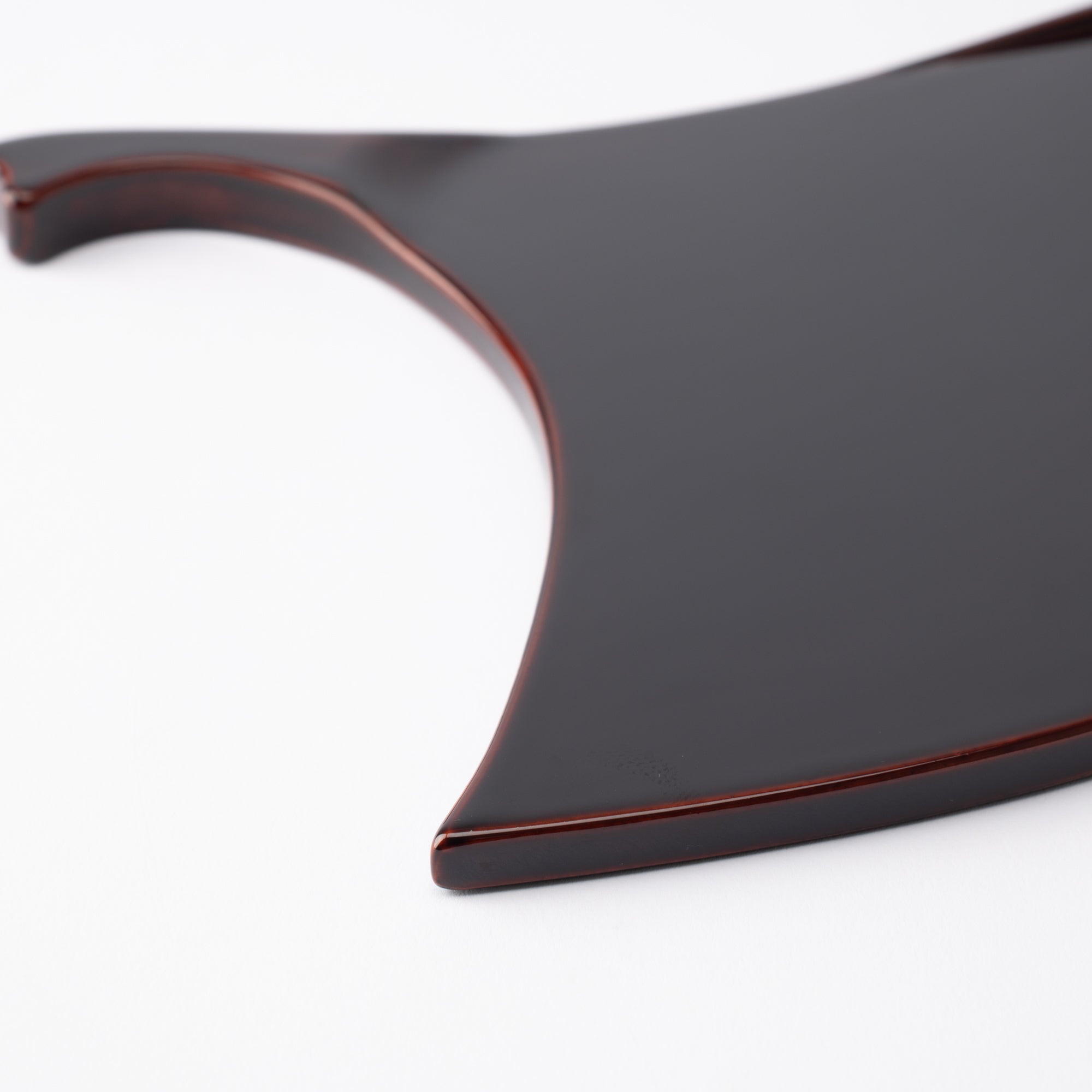
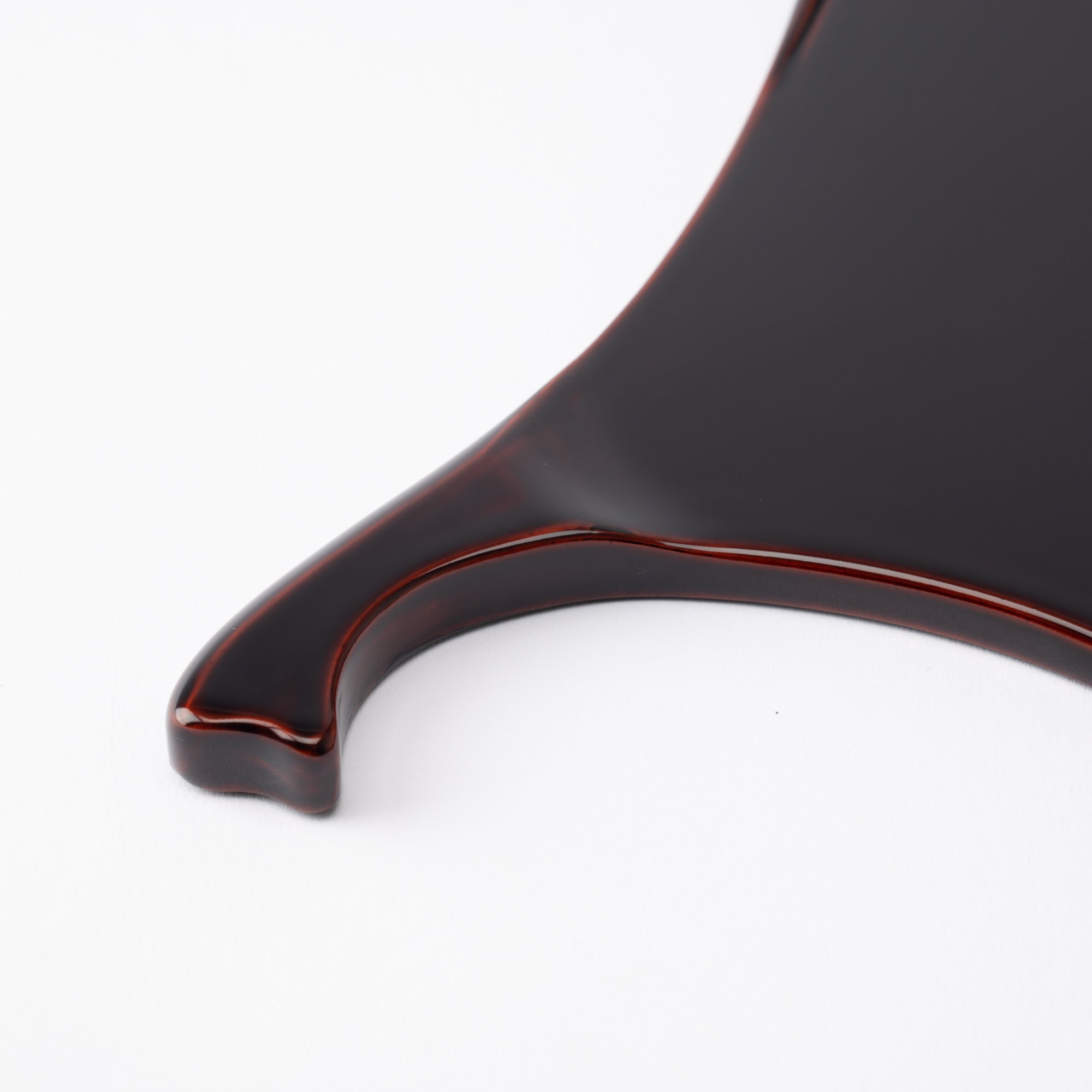
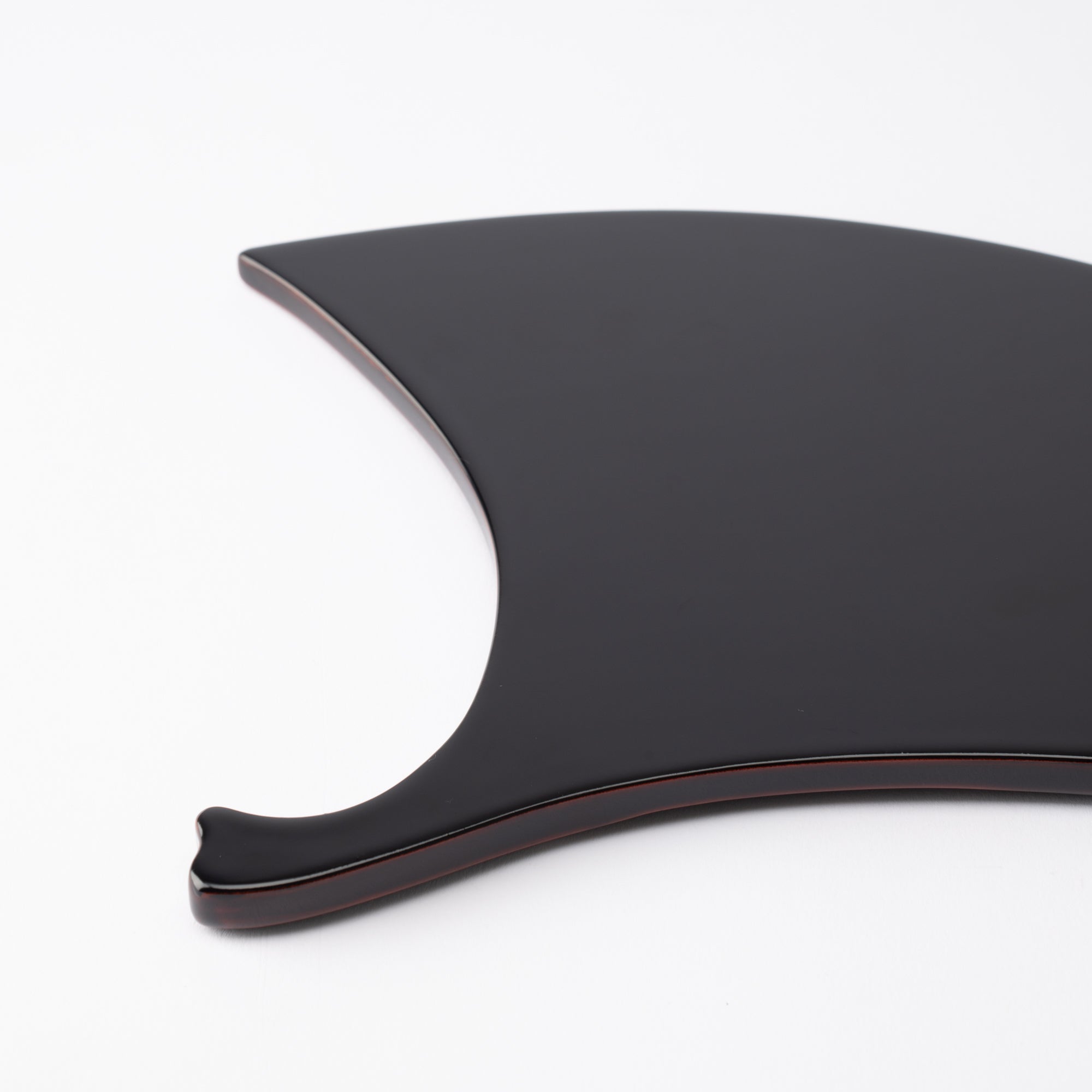
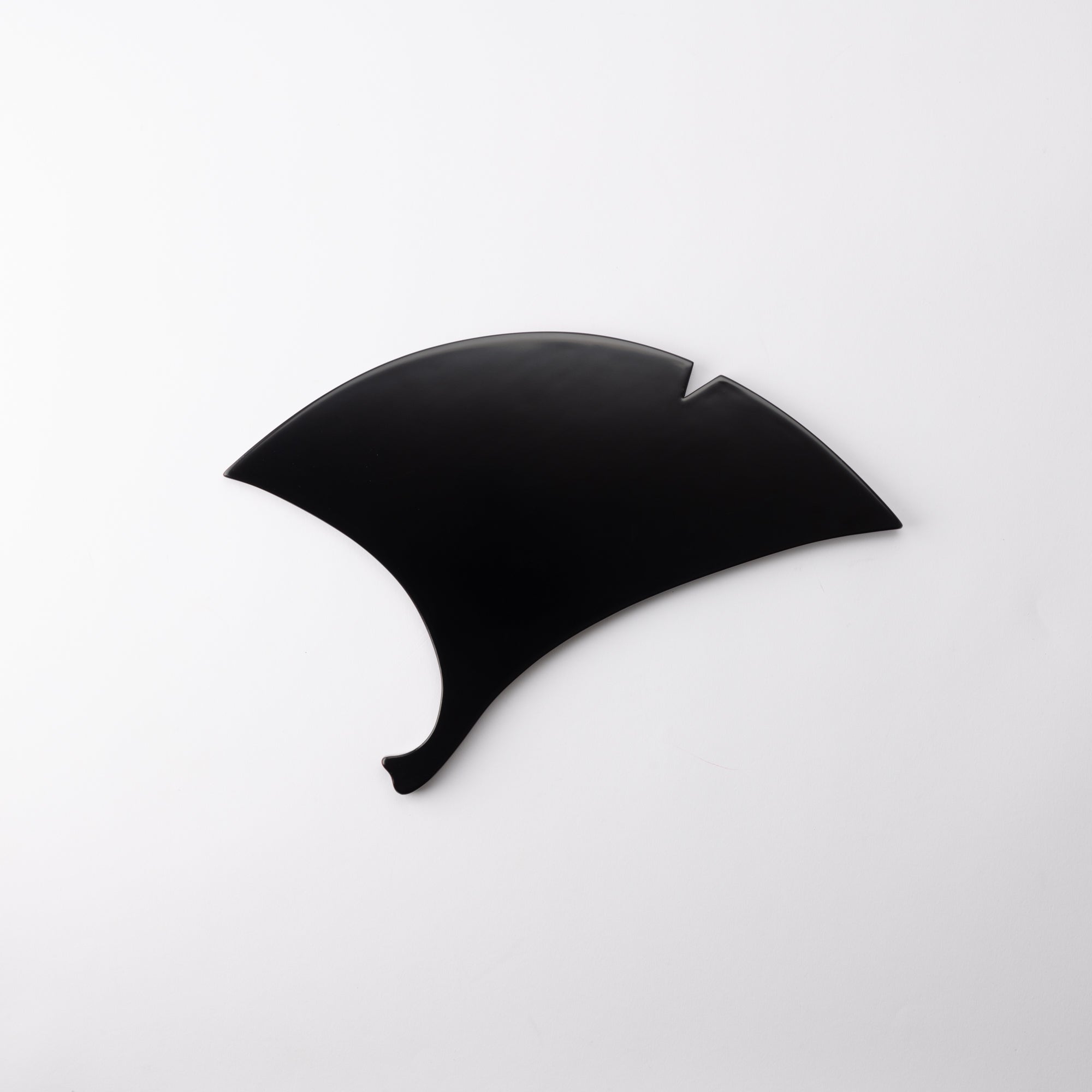
Ginkgo Leaf Serving Tray
Estimated Shipping Widget will be displayed here!
This beautiful glossy plate features a shape of a ginkgo leave that is finished with a lacquered technique called "Tame-nuri."
Tame-nuri is a lacquering technique in which the red color can be seen through the translucent lacquer by applying a coat of translucent black lacquer on top of a middle coat of red lacquer. The calmness of Tame-nuri and the appearance of the ginkgo leaf make it a fine presence.
You can arrange a bamboo leaf on the plate and place Japanese confectionaries on it, or lay a paper mat on the plate to serve Tempura. You can also place Japanese accessaries, such as paper dolls on the plate or seasonal ornaments, and display it in your room. Smooth to the touch, the beautiful lacquer coating will brighten up your dining table.
To clean, it can be hand-washed, but please make sure to wipe it dry thoroughly.
DETAILS
| Quantity | 1 |
| Size | L 34.5 cm (13.6 in) × W 18 cm (7.1 in) × H 8 mm (0.3 in) |
| Material |
Wood [Coating] Lacquer |
| Microwave | No |
| Dishwasher | No |
Crafts
Echizen lacquerware originated around the city of Sabae in Fukui Prefecture, in the northern part of Japan. With a history going back more than 1,500 years, it is known for its subdued luster and elegant beauty. It is produced by experienced artisans, each specializing in one step of the production process.
Along with the changing lifestyles of Japanese people and market needs, creators of Echizen lacquerware have developed diversified products and created technology for mass production. Today, more than 80% of the lacquerware for domestic food industry and business use comes from Echizen. This is a region that is not only home to centuries of tradition, but also reinventing itself through innovation.
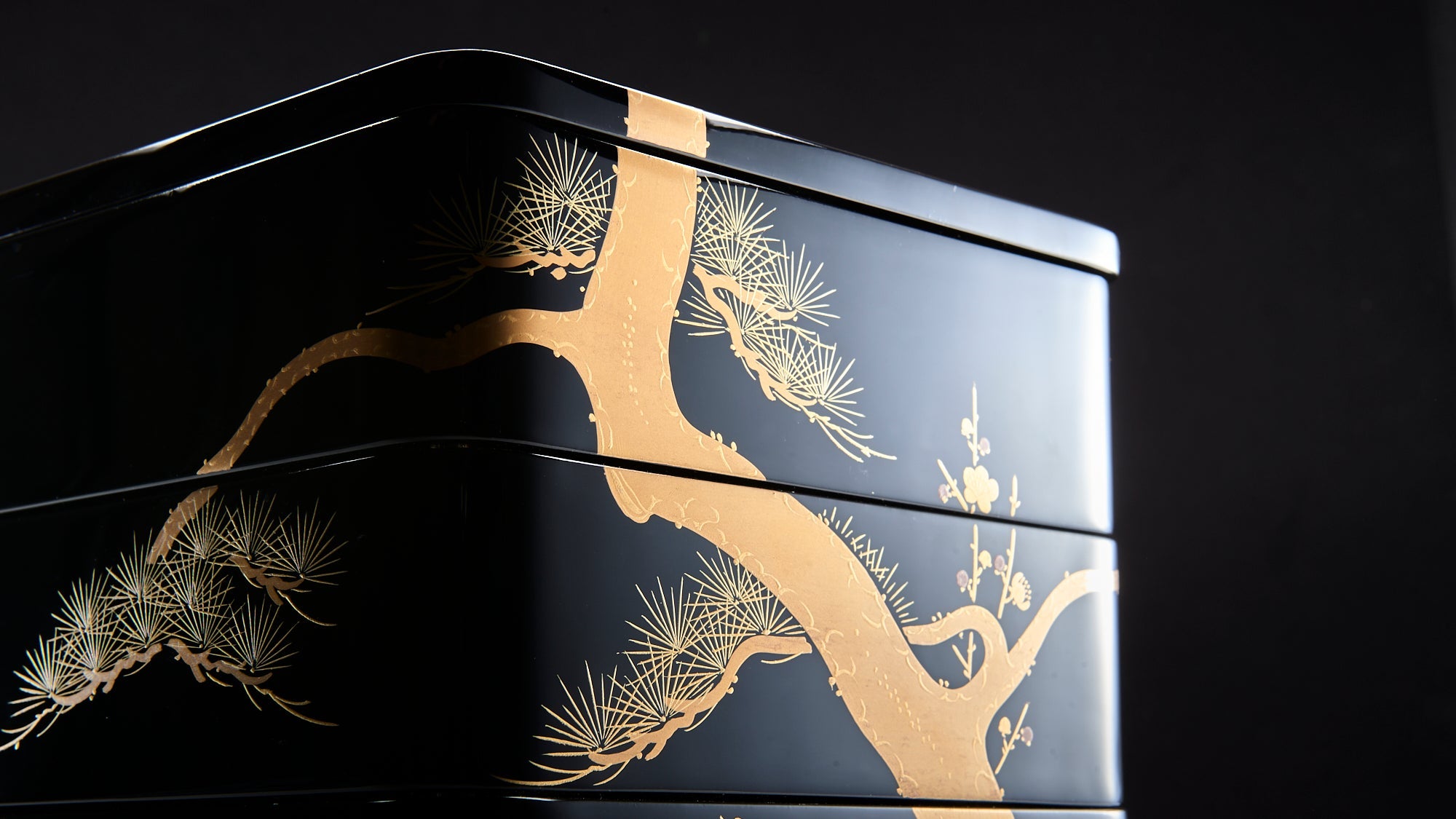
How to Care
Choose options


















Platters
This collection showcases plates over 31 cm (12.2 in), perfect for placing at the center of the table for shared meals. Whether presenting main dishes or ingredients for a hand-rolled sushi party, these versatile serving plates are ideal for any gathering.
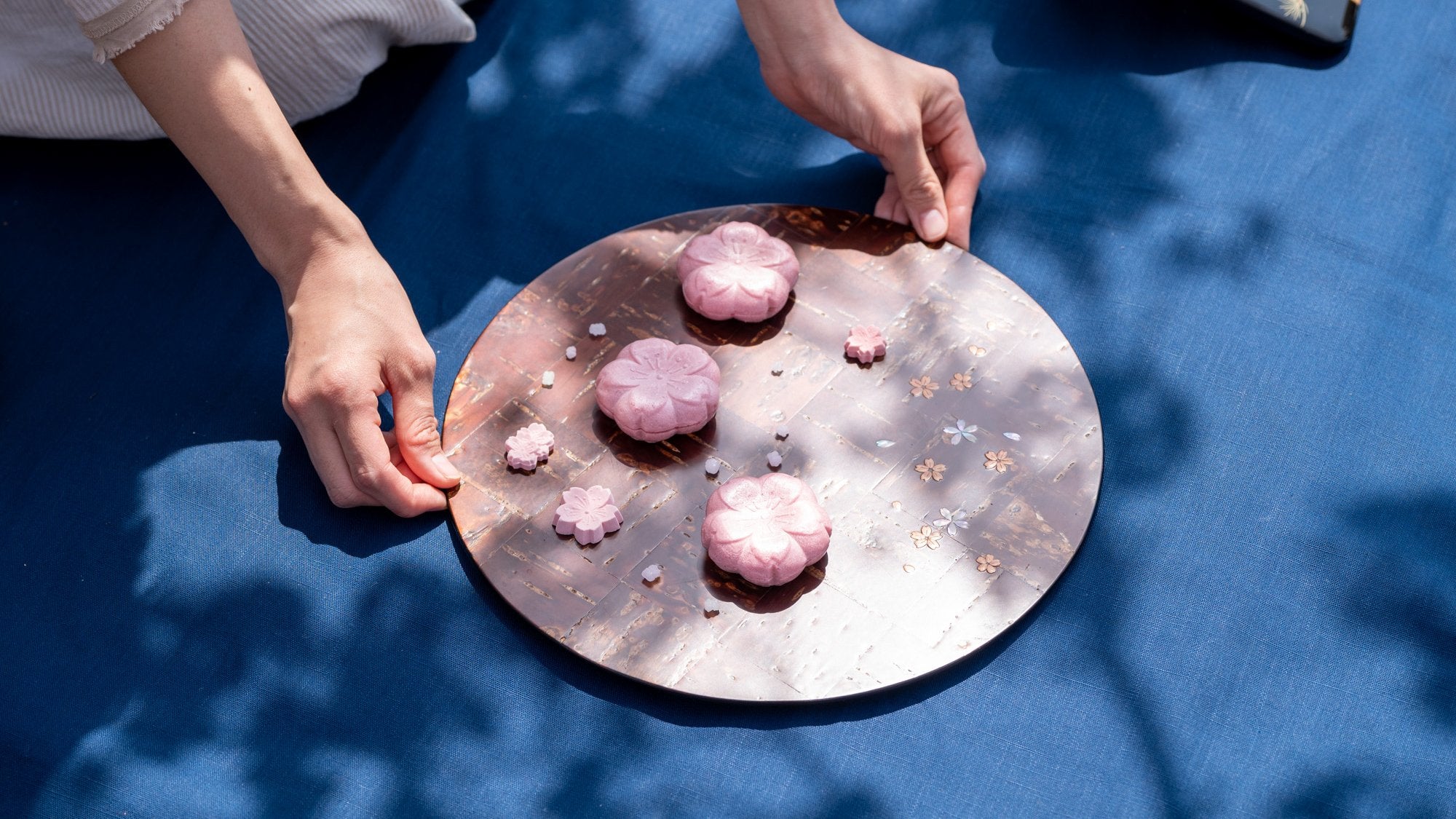
Lacquerware
Japanese lacquerware, also called shikki in Japanese, is a proud handicraft with a long history dating back to 5,000 BCE, and traditional methods are still followed today. Durable, light, antibacterial, and robust enough to endure for more than one hundred years, Japanese lacquerware is not only beautiful, but also highly functional.
In addition to the fine Japanese lacquerware found in antique and vintage pieces, there is also contemporary Japanese lacquerware suitable for modern life made by artisans who continue to improve their skills and pass on tradition today.
